Ever looked at your bank statement and felt like it was written in another language? You’re not alone. Bank statements from Bank of America can be confusing, but they hold all the details of your financial activity. This guide is here to help you break it down, understand what each section means, and make sure you’re not missing out on important information. Whether it’s spotting hidden fees or understanding your interest rates, we’ve got you covered.
Key Takeaways
- Bank statements tell you where your money goes, showing all transactions clearly.
- Watch out for hidden fees and charges that might sneak into your statement.
- Always double-check for errors or suspicious activity to keep your finances safe.
Decoding the Mystery: What Your Bank Statement Really Says

The Basics: Understanding the Layout
Alright, folks, let’s crack open that bank statement of yours. Think of it as a treasure map, but instead of gold, it leads you to understanding your money. Your bank statement is essentially a detailed summary of all the cash that’s been partying in and out of your account. At the top, you’ll notice the statement period—basically the timeframe this statement covers. Look for words like "statement ending" or a date range. Then, there’s the account summary, showing your opening and closing balances. It’s like a mini financial report card!
Hidden Fees and Charges: What to Watch Out For
Now, here’s where the plot thickens. Banks love to sneak in fees like they’re Easter eggs in a Marvel movie. Keep an eye out for any "service fees," "maintenance charges," or those pesky "overdraft fees." They can add up quicker than you can say "Why is my balance so low?" Make a list of these charges and see if there are ways to avoid them—like maintaining a minimum balance or opting for electronic statements.
Interest Rates: Are You Getting a Good Deal?
Interest rates are like that friend who always borrows money but never pays back. If your account earns interest, your statement will show how much you’ve gained. Check if your rate is competitive by comparing it with other banks. If not, it might be time to consider switching to a bank that treats you better.
Spotting Errors: How to Catch Mistakes
Mistakes happen—even banks aren’t perfect. Go through your statement with a fine-tooth comb. Look for duplicate transactions, incorrect charges, or any mysterious withdrawals. If you spot something fishy, contact your bank pronto. Remember, it’s your money, and you deserve to know where every penny goes!
"A bank statement is your financial diary, capturing every transaction, fee, and interest earned. It’s your story, told in numbers."
By understanding each section of your bank statement, you can keep a sharp eye on your finances and ensure everything is in order. Happy sleuthing!
Navigating the Numbers: Making Sense of Your Transactions
Alright, let’s get down to the nitty-gritty of your bank statement. It’s not just a list of numbers; it’s a window into your spending habits. Here’s how to make sense of it all.
Deposits and Withdrawals: The In and Out
Think of your bank statement as your financial diary. Every deposit is a little "yay" moment where money comes in, like your salary or that birthday cash from Grandma. Withdrawals, on the other hand, are those "oh no" moments when money leaves your account—think bills, shopping sprees, or that daily coffee fix.
Transaction Codes: Cracking the Code
Ever looked at your statement and wondered what all those weird codes mean? It’s like trying to read ancient hieroglyphics! Each transaction has a code, and while they might look confusing, they’re really just shorthand for where your money’s gone. A quick Google search usually clears things up.
Recurring Payments: Keeping Track of Subscriptions
Subscriptions are sneaky little things. They seem harmless until you realize you’re paying for five different streaming services. Your bank statement helps you keep tabs on these recurring payments so you can decide if you really need them all. Spoiler: you probably don’t.
Fraud Alerts: Protecting Your Finances
Spotting something fishy on your statement? It might be fraud. Always keep an eye out for transactions you don’t recognize. If something doesn’t add up, contact your bank immediately. Better safe than sorry, right?
Bank statements are more than just numbers; they’re your financial story. Keep track, stay informed, and make your money work for you.
Bank of America Specifics: Tailoring Your Statement Experience

Customizing Your Statement: Options and Preferences
Ever feel like your bank statement could use a little personal touch? Well, with Bank of America, you can do just that. From choosing how your transactions are displayed to setting alerts for specific account activities, you can tweak your statement to fit your needs. Whether you want to see every single coffee purchase in excruciating detail or just the big stuff, it’s all up to you. Personalization is key to making your financial tracking as painless as possible.
Digital vs. Paper: Choosing the Right Format
In the age of technology, the debate between digital and paper statements is like choosing between texting and sending a letter. Bank of America gives you the option to go paperless, saving trees and reducing clutter. Plus, digital statements are accessible anytime, anywhere. However, if you’re old-school and love the feel of paper, you can still opt for traditional mail. It’s all about what makes you comfortable.
Understanding Bank of America's Unique Features
Bank of America isn’t just any bank; it’s got some nifty features up its sleeve. From accessing your bank statement PDF online to integrated budgeting tools, these features are designed to make your life easier. Their app and online banking platforms are packed with tools that help you keep track of your spending, set savings goals, and even get insights into your financial habits. It’s like having a financial advisor in your pocket.
Customer Support: Getting Help When You Need It
Let’s face it, sometimes things go wrong, and when they do, Bank of America’s customer support is there to save the day. Whether you prefer chatting online, calling, or even visiting a branch, help is always at your fingertips. They’re known for their responsive service, so you won’t be stuck listening to elevator music for hours. When in doubt, reach out!
Financial Planning with Your Bank Statement: A Roadmap to Success
Budgeting Basics: Using Your Statement as a Tool
Alright, let’s get real. Your bank statement is more than just a list of transactions—it’s your financial GPS. Use it to track where your money is sprinting off to each month. Start by highlighting all those little expenses that sneak up on you like ninja squirrels (yes, that $5 coffee counts). Once you have a handle on your spending habits, you can set a realistic budget that doesn’t feel like a financial straitjacket.
Setting Financial Goals: Tracking Progress
Think of your bank statement as your personal scoreboard. Whether you’re saving for a vacation in Hawaii or just trying to pay off that credit card, your statement shows you how close you are to the finish line. Set clear goals, check your progress regularly, and adjust your spending as needed. It’s like having a financial coach, minus the whistle.
Tax Time: Making the Most of Your Statement
Ah, tax season—the time of year when everyone suddenly becomes a math genius. Your bank statement is a treasure trove of tax deductions just waiting to be discovered. Keep an eye out for deductible expenses like charitable donations or business costs. When April rolls around, you’ll be the one smiling at your calculator.
Long-Term Planning: Preparing for the Future
Your bank statement isn’t just about the here and now. It’s also a tool for planning your financial future. Whether it’s saving for retirement, a rainy day fund, or that dream villa in Tuscany, your statement can help you map out your long-term plans. Think of it as your financial crystal ball, helping you predict and prepare for whatever comes next.
"Your bank statement is like a financial diary. It tells the story of your money, where it’s been, and where it’s going. Use it wisely, and it can help you write the next chapter of your financial life."
Conclusion
So, there you have it! Bank statements might seem like a puzzle at first, but once you get the hang of it, they’re not so bad. They’re like your financial diary, showing you where your money’s been and where it’s going. Whether you’re trying to spot those sneaky fees or just making sure your paycheck actually landed in your account, understanding your statement is key. And hey, if you ever feel lost, don’t hesitate to reach out to your bank. They’re there to help, even if it means explaining what "ACH" stands for for the hundredth time. Happy banking!
Frequently Asked Questions
How do I read my bank statement?
To read your bank statement, start by checking the statement period to know which dates are covered. Look at the opening and closing balances to see how your money changed. Review all deposits, withdrawals, and any fees charged during the period. Make sure the transactions listed match your records.
What should I do if I find a mistake on my bank statement?
If you spot an error on your bank statement, contact your bank right away. You can usually call their customer service or visit a local branch. Explain the mistake you found and provide any evidence you have, like receipts or transaction records.
Why is my bank charging me fees?
Banks charge fees for different reasons, like maintaining your account, using ATMs outside their network, or overdrawing your account. Check the fee section of your statement to see what you were charged for. If you’re unsure, ask your bank for more details.







